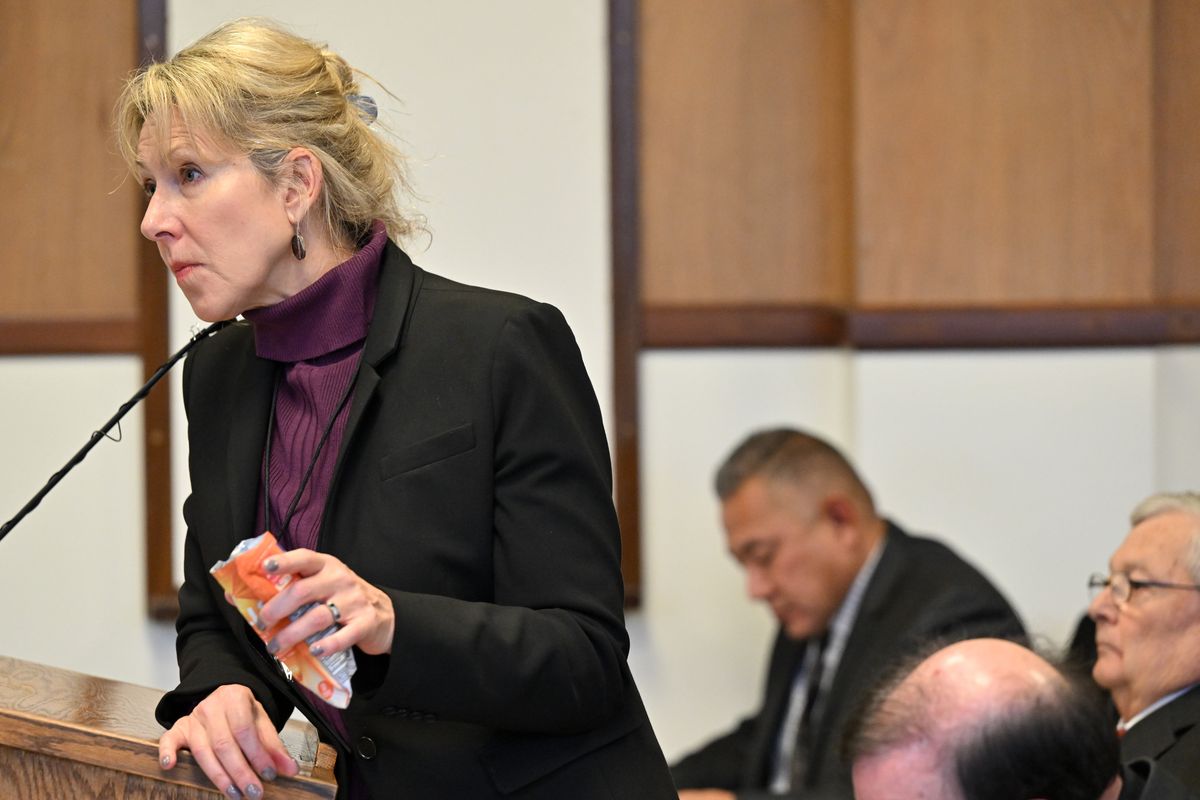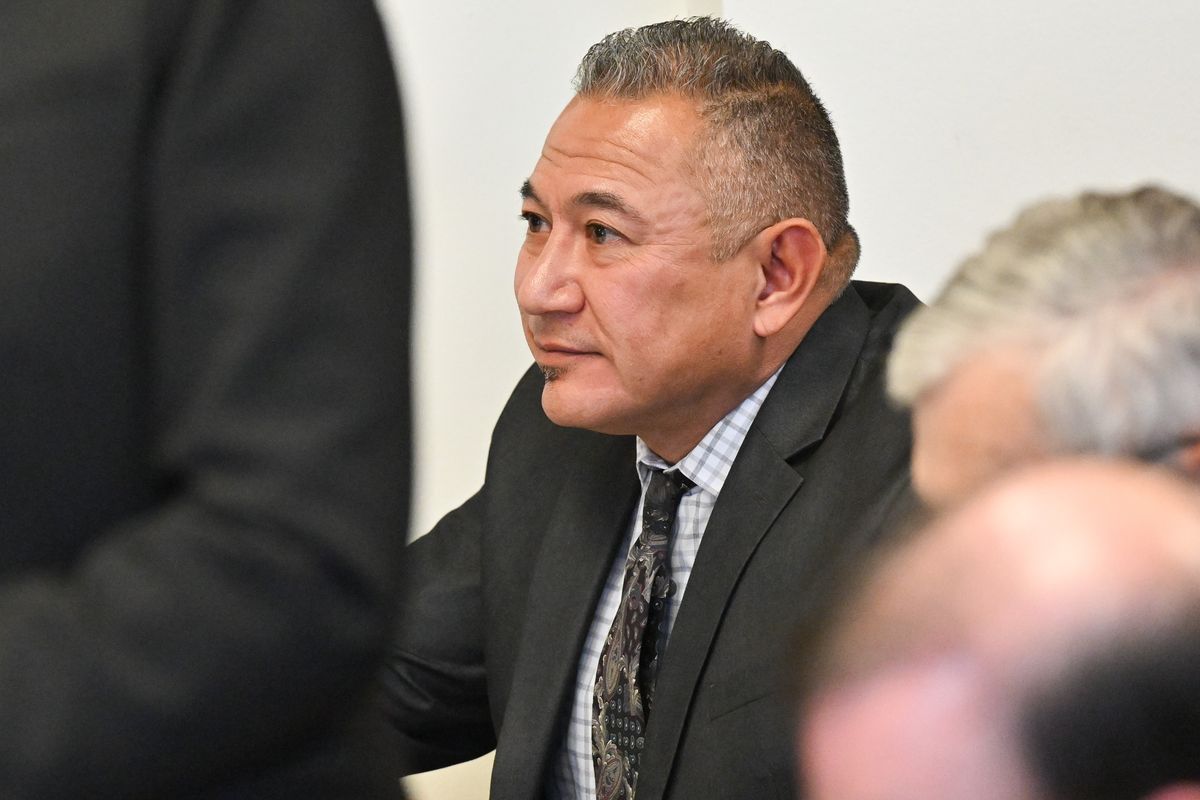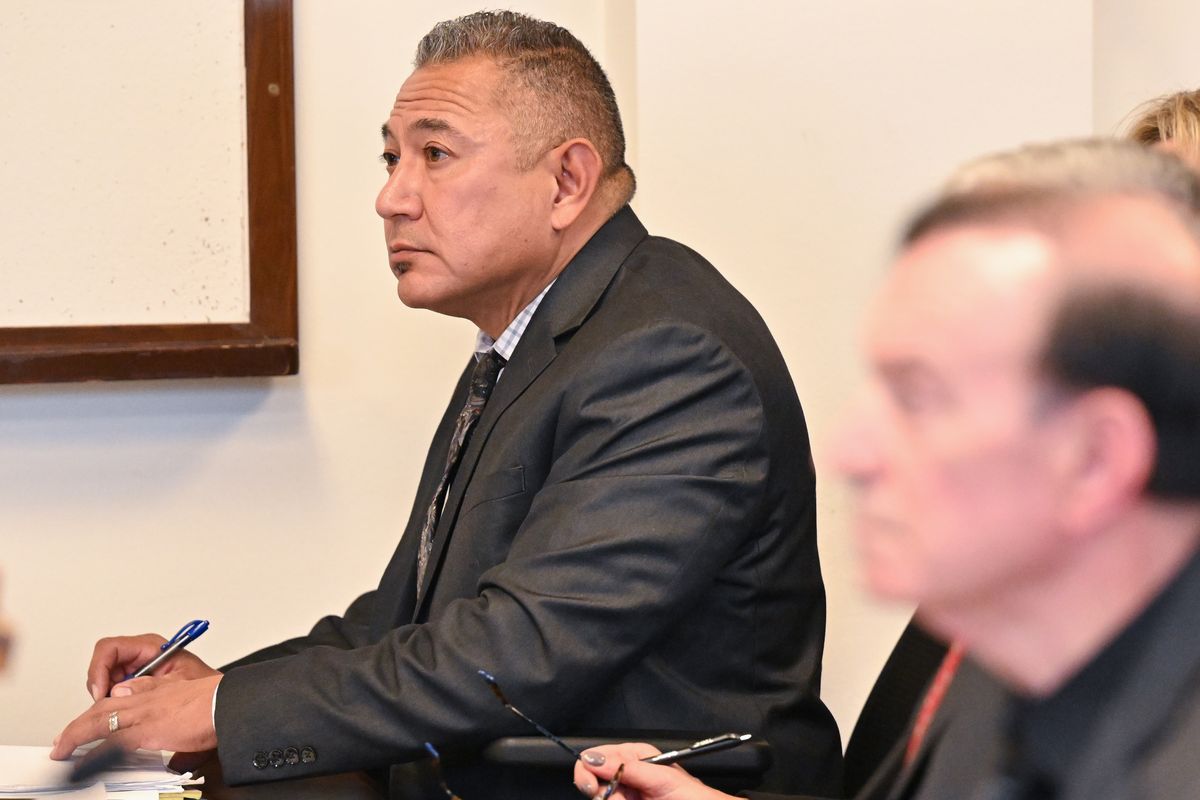Attorneys make closing arguments in 1986 cold case murder trial, verdict expected after Christmas
Richard Aguirre, left, listens as Spokane County Prosecuting Attorney Larry Haskell questions a witness on Tuesday in Spokane County Superior Court. Aguirre faces the charge of first-degree murder for the 1986 killing of 27-year-old Ruby Doss. (Tyler Tjomsland/The Spokesman-Review)
On Jan. 30, 1986, Ruby Doss got ready for a night out on East Sprague.
She donned two jackets to stave off the misty cold and headed out.
Around 9 p.m., she stopped at an adult book store in the area to buy a condom or two.
By 10:44 p.m., offices were standing over 27-year-old Doss’ body.
Prosecutors and defense attorneys gave their closing arguments Tuesday in the bench trial of Richard Aguirre, 59, who is accused of killing Doss.
At the scene of Doss’ death, a single condom was found, Deputy Prosecutor Richard Whaley said.
“One condom that was filled with the DNA of Richard J. Aguirre,” he said.
He argued that Aguirre picked Doss up for a car date, a common term for a paid sex act in a car. They drove to the straw-filled pit where they likely had sex, based on the condom containing semen, Whaley said.
Then something went wrong. There was a struggle. Doss’ coat, money, earrings and a steak knife she used to protect herself were found in the straw.
Boot prints matching Doss and larger prints were found heading toward a concrete area, where her body was discovered.
Doss was hit on the head at least five times, then strangled, which takes at minimum 3 minutes, Whaley said, referencing medical examiner testimony.
Whaley argued the length of time the assault took and the distance from the straw area to where Doss’ body was found show that Doss’ killing was premeditated.
He also argued that there was not enough time for Doss to have another date between when she was seen buying condoms and when she was killed.
Four people testified that Aguirre made admissions related to this case, Whaley pointed out.
Those include that he had sex with Doss and but didn’t kill her and that he hit and choked a woman in the late 1980s, but that the woman was alive when he left.
Finally, Whaley pointed out that with advances in DNA technology, Doss’ DNA was detected on the bag that the condom from the scene was placed in.
“It shouldn’t be lost on the court how that evidence fits within all the other evidence that has been brought to the court,” he said of the heavily debated DNA evidence.
Aguirre’s attorney, Karen Lindholdt, told a different story.
The investigation was a mess, from sloppy securing of the scene, lack of follow-up on alternative suspects and contamination of the DNA evidence, she said.
First, she pointed to the lack of Aguirre’s DNA on Doss’ blouse.
“If the murderer had his hands around Ms. Doss’ neck for at least 3 minutes, then his touch DNA would be on her neckline,” Lindholdt said. “There was DNA found on Ms. Doss’ neckline, but it did not match Mr. Aguirre.”
She noted that none of the dozens of items tested in the case, except for the condom, had Aguirre’s DNA on them.
Lindholdt then argued that the East Sprague area was rife with prostitution at the time, so it’s extremely unlikely that the condom taken into evidence was the only one in the area.
Multiple investigators testified that the scene was searched and that other condoms, if present, would have been collected as evidence.
“The fact is, the detectives chose to focus on one condom,” Lindholdt said.
She then pointed out that a former Washington State Patrol forensic scientist had left his own DNA on Doss’ blouse when examining in the late 1980s before precautions to prevent leaving DNA were in place.
Lindholdt pointed to the impressions expert the defense hired, who said that Aguirre’s naked foot is larger than the shoe impressions left on the scene.
She pointed to the fact that the condom was disposed of after testing and to a lack of control samples retained and passed on to other labs, as problems with the case.
She also noted that none of the private labs over the years was able to produce a profile from the nonsperm portion of the condom extracts.
Lindholdt called into question the integrity of the people who testified to Aguirre’s admissions, citing pressure from investigators, among other circumstances.
Finally, she called into question the state’s DNA expert’s findings of a likely mixture of Doss and Aguirre’s DNA on the package the condom was originally placed in, sighting different results from different software programs.
She pointed to testimony Tuesday morning by her DNA expert, Ruth Ballard, who said the DNA case against Aguirre is “weak to nonexistent.”
It’s not just the DNA case that’s lackluster, but the case in its entirety, Lindholdt argued.
“The state’s evidence against Richard Aguirre is very weak,” she said.
In his rebuttal, Whaley argued Lindholt is complicating the case.
With the timeline, Aguirre’s DNA in the condom, which even the defense’s expert agreed was there, and his admissions to friends, it’s clear Aguirre is guilty, Whaley argued. He ended by rebuffing Lindholdt’s dismissal that Aguirre was joking about the accusations because, as a police officer, that’s how you deal with hard things.
“People joke about what other people do,” Whaley said. “They don’t joke about what they’re accused of.”
Spokane County Superior Court Judge Jeremy Schmidt is scheduled to rule on Tuesday.


